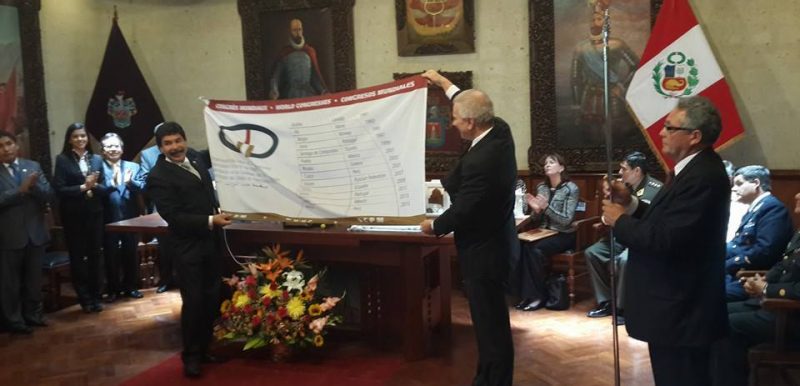Arequipa, Peru
General Information
Regional secretariat
Administrative status
Capital of the Arequipa Region
Historical Centre of the City of Arequipa
Registration Year
2000
Historical function
Cultural
LOCATION AND SITE
The historic center of Arequipa, built in volcanic sillar rock, represents an integration of European and native building techniques and characteristics, expressed in the admirable work of colonial masters and Criollo and Indian masons. This combination of influences is illustrated by the city’s robust walls, archways and vaults, courtyards and open spaces, and the intricate Baroque decoration of its facades.
URBAN MORPHOLOGY
With its buildings built mostly in white or pink volcanic rock (sillar), the historical center of Arequipa has a distinct character resulting from natural causes and historical context. The pre-existent indigenous populations, the Spanish conquest and the evangelization, the spectacular natural setting, and the frequent earthquakes, are all main factors in the definition of Arequipa’s identity. The city is the result of its people’s endurance against natural processes and the capacity of cultures to overcome crises. Arequipa was founded in 1540 in a valley that had been intensively farmed by pre-Hispanic communities. The layout of an indigenous hamlet has survived close to the Historical Centre in the district of San Lázaro. The World Heritage site consists of 49 original blocks of the Spanish layout. In addition, there are 24 blocks from the colonial period and the 19th century.
REGISTRATION CRITERIA
Criterion (i): The ornamented architecture in the historical center of Arequipa represents a masterpiece of the creative integration of European and native characteristics, crucial for the cultural expression of the entire region.
Criterion (iv): The historical center of Arequipa is an outstanding example of a colonial settlement, challenged by the natural conditions, the indigenous influences, the process of conquest and evangelization, as well as the spectacular nature of its setting.
HISTORICAL REFERENCE
- Major earthquakes have marked the key moments of change in the development of Arequipa architecture. It is thus possible to identify five periods of development: foundation as a village (1540-82), Baroque splendor (1582-1784), the introduction of Rococo and neoclassicism (1784-1868), modern empiricism and neoclassical fashion (1868-1960), and contemporary design.
- The core of the historic town is the Plaza de Armas (Plaza Mayor) with its archways, the municipality, and the cathedral. At one corner of the plaza, there are the church and cloisters of La Compañia, the most representative ensemble of the Baroque mestizo period at the end of the 18th century.
Photos
News
13 March 2014
13th World Congress of the OWHC – Presentation of the Organization’s flag to the city of Arequipa
Arequipa, Peru
Contact
Sr. Victor Hugo Rivera Chavez
Alcalde
Municipalidad Provincial de Arequipa
Calle El Filtro No 501
Arequipa, Arequipa, Perú
+51 54 205 804
[email protected]
Abg. Ingrid Natty Carpio Pérez
Regidora
Municipalidad provincial de Arequipa
Call El Filtro 501 - Cercado
Arequipa, Peru
969325463
[email protected]




